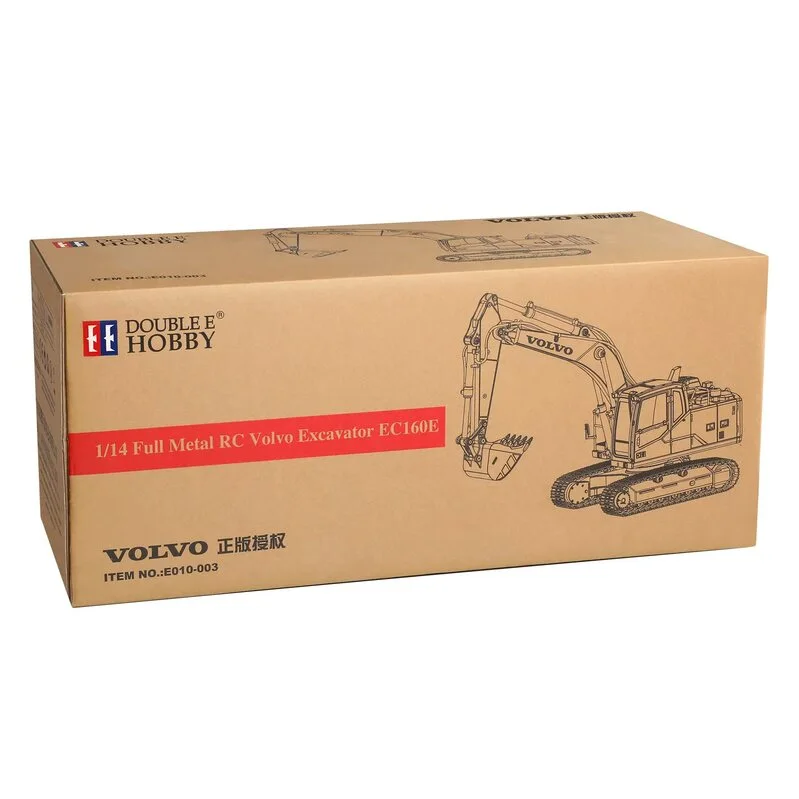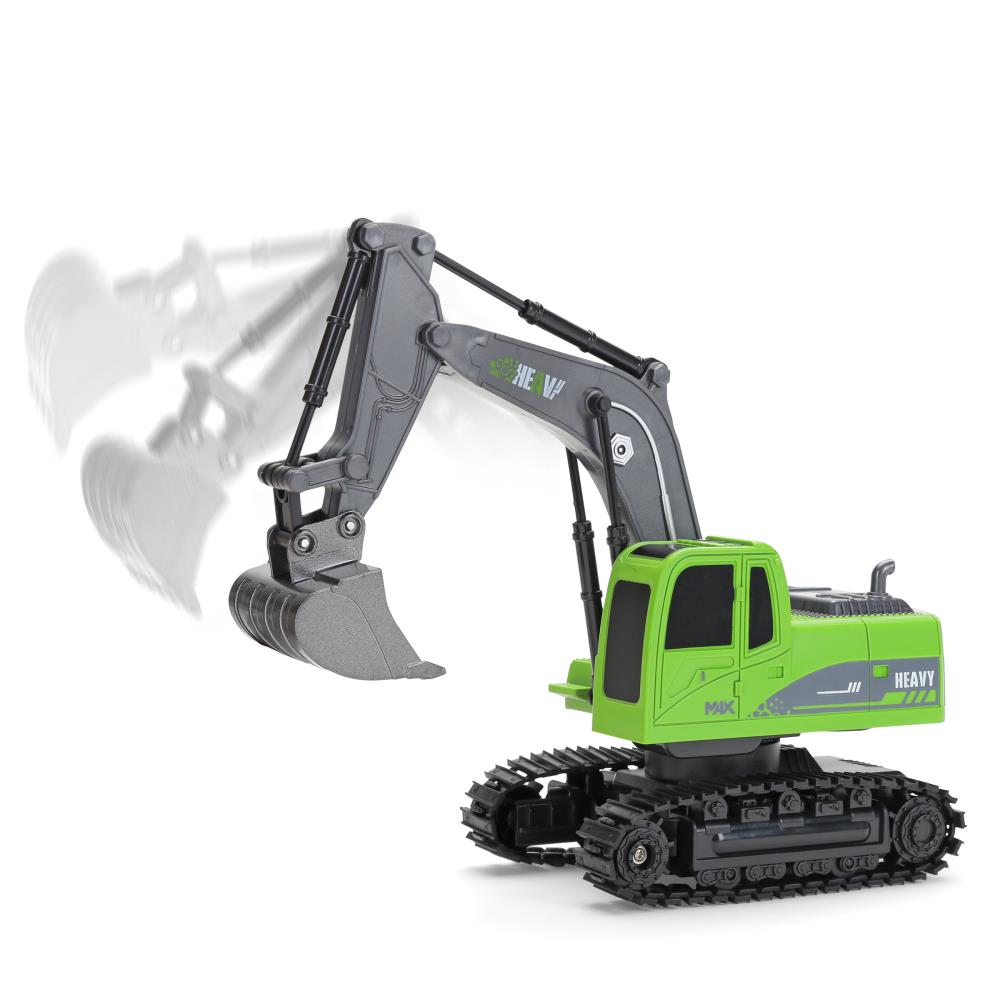The Important Features of Excavator That Make It a Must-Have Device
Excavators are crucial in the building and construction and landscape design industries. Their flexible accessories permit a range of jobs, from digging to demolition. In addition, they flaunt premium excavating depth and reach, powered by robust engines. Operator comfort and small styles enhance functionality in various settings. However, what absolutely sets excavators apart are their sophisticated hydraulic systems and durability. Comprehending these functions can clear up why they are considered crucial tools on any kind of job site.
Versatile Attachments for Boosted Capability
Excavators are powerful machines on their very own, the enhancement of versatile attachments considerably improves their functionality. These attachments transform a standard excavator right into a multi-purpose device, suitable for a range of jobs. Containers, for instance, been available in different forms and dimensions, enabling operators to dig, scoop, and move products effectively. Hydraulic thumbs can be included for improved gripping and handling of cumbersome products, such as logs or rocks.Furthermore, specialized attachments like augers and breakers enable boring and demolition work, expanding the excavator's energy on construction sites. remote control excavator. Grapples are an additional alternative, ideal for arranging and moving debris. This adaptability not just enhances productivity yet likewise minimizes the requirement for numerous devices, saving time and expenses. By furnishing excavators with the appropriate attachments, operators can deal with diverse projects, making them indispensable in the construction industry
Superior Excavating Deepness and Get To
Excavators are made with superior excavating depth and reach, permitting them to maneuver in limited rooms and accessibility hard-to-reach locations. This ability is vital for numerous construction and excavation projects, where typical machinery may drop short. With adjustable boom arms and extendable tracks, excavators can conveniently navigate uneven terrain while preserving stability.The digging depth can differ significantly amongst versions, usually ranging from 10 to 25 feet, depending upon the design and purpose. This feature enables drivers to dig deep into foundations, trenches, and other deep structures effectively. Furthermore, the reach of an excavator permits exact excavating and product handling without repositioning the device often, saving time and labor costs.Ultimately, the superior excavating deepness and reach of excavators make them crucial for experts seeking to finish complex jobs with accuracy and effectiveness. Their convenience boosts productivity on work sites, showcasing them as a crucial tool in modern building.
Powerful Engine Performance

Powerful engine efficiency plays an essential role in the abilities of an excavator when it comes to efficiency and efficiency on building and construction websites. A robust engine creates significant horsepower, permitting the equipment to deal with durable tasks effortlessly - remote control excavator. This strength translates into faster cycle times, making it possible for drivers to full projects more quickly.Additionally, powerful engines supply the essential torque to take care of challenging terrains and varied loads, making sure that the excavator can execute efficiently under different problems. Whether it is lifting, excavating, or relocating products, the engine's performance directly impacts the overall functional effectiveness of the machine.Furthermore, innovations in engine modern technology have actually caused boosted gas performance, decreasing functional expenses while maintaining power outcome. Ultimately, the engine's performance functions as the backbone of an excavator, affirming its status as a vital tool in the building sector
Advanced Hydraulic Systems

Boosted Lifting Capacity
A significant improvement in raising ability can be associated to innovative hydraulic systems located in contemporary excavators. These systems utilize high-pressure fluid to produce higher force, enabling drivers to lift much heavier lots with ease. The engineering behind these hydraulics assurances peak performance, supplying an impressive power-to-weight proportion that enhances general effectiveness. Consequently, excavators can take on demanding jobs, such as lifting large products or equipment, without jeopardizing security. In addition, the durable design of hydraulic elements adds to raised longevity and dependability, making them ideal for different building and construction atmospheres. This enhanced training capacity not just minimizes the time needed for tasks but likewise minimizes the need for additional equipment, proving important for both performance and cost-effectiveness in the construction industry.
Enhanced Precision Control
Although conventional excavators frequently battled with accuracy, modern-day hydraulic systems have changed control systems, making it possible for operators to carry out tasks with impressive precision. These innovative systems make use of proportional control shutoffs that enable smoother and a lot more responsive movements, significantly decreasing the margin for mistake. Operators can now finely tune the excavator's activities, making it less complicated to navigate limited areas and handle delicate materials. Enhanced feedback systems even more notify operators of real-time efficiency, guaranteeing optimal sychronisation in between the machine and driver. This increased accuracy not only improves performance but likewise enhances security on work websites, reducing the threat of accidents. Consequently, contemporary excavators outfitted with innovative hydraulic systems are very useful devices for building and construction and excavation tasks calling for meticulous precision.
Driver Convenience and Visibility
Operator comfort and visibility are crucial parts next in the design of modern-day excavators (remote control excavator). Attributes such as ergonomic seat layout, improved visibility alternatives, and effective control layouts greatly improve the driver's experience and productivity. Prioritizing these facets assurances that drivers can work successfully and securely in various problems
Ergonomic Seat Layout
Comfort and visibility are vital in excavator layout, with the ergonomic seat playing a crucial role in improving the driver's experience. An ergonomic seat is crafted to sustain the driver's body, decreasing exhaustion during lengthy hours of operation. Adjustable functions, such as seat height, back-rest angle, and lumbar support, cater to private preferences and advertise suitable pose. These modifications boost convenience and allow the operator to preserve focus on tasks without discomfort. In addition, a well-designed seat can give better lateral assistance, enabling smoother maneuvering when the excavator is in procedure. This thoughtful layout not only enhances productivity but also adds to overall security, making certain that drivers can perform their obligations effectively and efficiently.
Boosted Exposure Features
The style of an excavator expands past just the seat, with improved visibility features playing a substantial role in operator convenience and general safety and security. Large home windows and purposefully positioned mirrors supply operators with a clear sight of their environments, decreasing dead spots. This style factor to consider enables much better spatial recognition, which is important in busy work atmospheres. In enhancement, several excavators include rearview video cameras and advanced surveillance systems that help operators in navigating limited areas. The combination of these visibility includes not only promotes safety yet additionally minimizes operator tiredness by making it possible for easier tracking of workspace. Ultimately, boosted visibility adds to much more effective operations and aids guarantee that excavators can execute their tasks properly and safely.
Control Design Effectiveness
While maneuvering complicated work websites, a reliable control design greatly enhances both driver comfort and presence. A well-designed control setup assurances that operators can access important features with marginal initiative, decreasing exhaustion throughout lengthy hours. Ergonomic joystick placements and instinctive button plans permit seamless procedure, allowing drivers to maintain concentrate on the task available. Additionally, clear exposure of both the workplace and the control panel is important for security and accuracy. Modern excavators usually integrate adjustable seating and control settings to fit various driver preferences, better boosting comfort. Eventually, a thoughtfully made control layout not only enhances efficiency yet also promotes a much safer working environment by permitting drivers to respond promptly to changing conditions.
Compact Design for Urban Environments
As city building websites often encounter area restrictions, a portable style ends up being essential for excavators running in these atmospheres. These makers are engineered to navigate limited spaces, permitting for effective maneuverability in congested job sites. A minimized footprint enables them to work very closely to existing frameworks, minimizing disruption and optimizing productivity.The small style commonly includes much shorter tracks and a tighter transforming distance, facilitating operation in narrow streets and constrained areas. Lightweight products contribute to ease of transportation, making it less complex to move the excavator from one area to one more within the city landscape.Additionally, many compact excavators are outfitted with features such as versatile attachments and extendable arms, boosting their performance while keeping a tiny dimension. This adaptability permits operators to deal with a variety of tasks, from excavating to demolition, all while suitable perfectly into the restraints of city atmospheres.

Resilience and Upkeep Considerations
Toughness stands as a necessary consider the efficiency and longevity of excavators, particularly sought after urban environments. These More Info devices go through strenuous problems, including varying dirt types, extreme temperatures, and high-frequency usage. Top quality products and durable construction are needed for making sure that excavators can hold up against these obstacles without compromising functionality.Regular maintenance is just as vital in preserving resilience. Scheduled examinations, prompt oil adjustments, and the substitute of used parts contribute considerably to an excavator's life expectancy. Operators needs to also pay interest to hydraulic systems, tracks, and undercarriages, as these parts usually birth the brunt of wear and tear.Investing in resilient excavators with extensive maintenance strategies boosts reliability and minimizes downtime, inevitably resulting in increased productivity on building websites. As a result, understanding the interplay in between toughness and maintenance is vital for anybody considering the acquisition of an excavator for metropolitan jobs.
Frequently Asked Concerns
How Do Excavators Contrast to Various Other Building And Construction Tools?
Excavators attract attention amongst building tools due to their versatility, enabling tasks such as digging, Read Full Article grading, and lifting. Compared to others, their hydraulic capacities offer greater performance and power, making them essential on various job sites.
What Safety Features Are Consisted Of in Modern Excavators?
Modern excavators integrate numerous security attributes, consisting of rollover defense systems, alarm systems, and advanced visibility improvements. These components work with each other to decrease risks, making sure operator safety and security while improving effectiveness on building sites and various other demanding settings.

Can Excavators Be Utilized in Winter Months Conditions?
Excavators can without a doubt be used in wintertime problems, provided they are equipped with suitable winter months attachments and precautions are taken. Proper maintenance and adjustments improve their efficiency, making sure effective procedure regardless of tough weather scenarios.
What Is the Ordinary Life-span of an Excavator?
The typical lifespan of an excavator typically varies from 7,000 to 10,000 hours of procedure. This period can substantially depend on upkeep practices, operating conditions, and the certain version's durability and design attributes.
How Do I Pick the Right Excavator Dimension for My Task?
Selecting the appropriate excavator dimension entails examining project scope, website conditions, and product types. Take into consideration elements like reach, depth requirements, and weight capability to guarantee maximum performance and safety and security during procedure. Size issues significantly in job success. Additionally, the reach of an excavator enables for precise digging and product handling without rearranging the machine regularly, conserving time and labor costs.Ultimately, the superior digging deepness and reach of excavators make them crucial for experts seeking to complete complicated tasks with accuracy and efficiency. Comfort and exposure are vital in excavator style, with the ergonomic seat playing an important function in enhancing the driver's experience. The layout of an excavator extends beyond just the seat, with improved exposure functions playing a significant duty in operator convenience and overall security. Modern excavators typically integrate adjustable seating and control setups to suit different operator preferences, further enhancing comfort. Light-weight products contribute to alleviate of transport, making it easier to move the excavator from one place to one more within the metropolitan landscape.Additionally, several portable excavators are furnished with functions such as extendable arms and flexible accessories, boosting their functionality while keeping a small size.